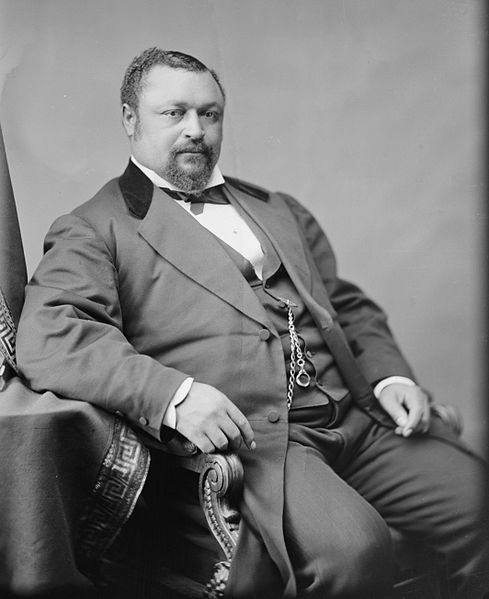
This week’s open threads focused on the accomplishments of several African-Americans.
Blanche Kelso Bruce (March 1, 1841 – March 17, 1898) was a U.S. politician who represented Mississippi as a Republican in the U.S. Senate from 1875 to 1881 and was the first elected non-white senator to serve a full term. Hiram R. Revels, also of Mississippi, was the first to ever serve in the U.S. Congress, but did not serve a full term. He is the first African American whose signature appeared on U.S. paper currency.
Bruce was born in Prince Edward County, Virginia near Farmville to Pettis Perkinson, a white Virginia plantation owner, and an African-American house slave named Polly Bruce. He was treated comparatively well by his father, who educated him together with his legitimate half-brother. When Blanche Bruce was young, he played with his half-brother. As Blanche Bruce was born enslaved, because of his mother’s status, his father legally freed him and arranged for an apprenticeship so he could learn a trade.
In 1850, Bruce moved to Missouri after becoming a printer’s apprentice. After the Union Army rejected his application to fight in the Civil War, Bruce taught school and attended Oberlin College in Ohio for two years. Then he went to work as a steamboat porter on the Mississippi River. In 1864, he moved to Hannibal, Missouri, where he established a school for blacks.
During Reconstruction, Bruce became a wealthy landowner in the Mississippi Delta. He was appointed to the positions of Tallahatchie County registrar of voters and tax assessor before winning an election for sheriff in Bolivar County. He later was elected to other county positions, including tax collector and supervisor of education, while he also edited a local newspaper. In February 1874, Bruce was elected by the state legislature to the Senate as a Republican, becoming the second African American to serve in the upper house of Congress. On February 14, 1879, Bruce presided over the U.S. Senate becoming the first African-American (and the only former slave) to do so. In 1880, James Z. George was elected to succeed Bruce.
At the 1880 Republican National Convention in Chicago, Bruce became the first African-American to win any votes at a major party’s nominating convention, winning 8 votes for vice president. The presidential nominee that year was James A. Garfield, who won election.
In 1881, Bruce was appointed by President Garfield to be the Register of the Treasury, making Bruce the first African-American whose signature was represented on U.S. paper currency. Bruce served as the District of Columbia recorder of deeds in 1890–93 and earned a salary of $30,000 per year. He was appointed as Register of the Treasury a second time in 1897 by President William McKinley and served until his death in 1898.
On June 24, 1878, Bruce married Josephine Beal Wilson (1853–February 15, 1923) of Cleveland, Ohio amid great publicity; the couple traveled to Europe for a four-month honeymoon. Their only child, Roscoe Conkling Bruce was born in 1879. He was named for New York Senator Roscoe Conkling, Bruce’s mentor in the Senate. In 2002, scholar Molefi Kete Asante listed Blanche Bruce on his list of 100 Greatest African Americans
***Information courtesy of Wikipedia.org and About.com***

